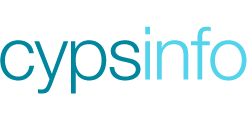This page describes the support available to schools and settings to support the needs of CYP who have a vision impairment.
Identification: For educational purposes, CYP are considered to have a VI if they have an eye condition that cannot be fully corrected by glasses and it interferes with their learning. The term VI is used to cover a range of conditions and a range of levels of vision.
The CYP may have, or will be in the process of receiving, a diagnosed eye condition by an ophthalmologist or optician. They will need adaptations to their environment, learning materials, specialist resources and/or particular teaching strategies in order to access the early years and school curriculum.
Access to Specialist Support: These referrals are commonly made by the hospital but occasionally when a child has recently moved into a new area these children may be missed. In this situation we welcome referrals by settings and schools.
Within North Yorkshire we have:
- Qualified Teachers of Visual Impairment
- Teachers for children who have a multi sensory impairment
- Sensory specialist practitioners
- An assistive technologist- Resource and Technical Manager
How can the vision team support your setting/school?
- Provide information, advice, support, direct teaching, and training to CYP with VI and their parents across their homes, early years’ settings, mainstream and special schools.
- Carry out functional vision assessments, to ensure advice for access to provision is relevant to individual's need
- Advise and support with the provision of specialist VI equipment to individual CYP and schools
- Offer direct teaching of Habilitation, Mobility skills and Independent Living Skills
- Work with teaching staff and teaching assistants, enabling them to feel confident in supporting the needs of CYP with vision impairment.
- Offer support/advice with transitions and access arrangements for examinations.
- Contribute to Education Health and Care Plan assessments, and Annual Reviews
- Work in partnership with other teams within IES to provide specialist advice for CYP with VI who have additional SEND
- Liaise with other agencies e.g. Paediatricians, Ophthalmologists and other eye care professionals.
This support will be offered free of charge to children and young people 0-25 who meet the criteria for a core service.
The Vision Team are also able to give schools and settings generalised anonymised advice pre referral. This would be via phone or email. This support is in line with the SEN Code of Practice 2014. In this instance no personal details of a CYP will be shared- contact NYSENDHubs@northyorks.gov.uk
All of the above assessment, support and intervention is available on a traded basis via NYES for children and young people who do not meet criteria for a core service, or if additional training, professional development or hands on support is needed. A “top up” service is also available to enhance a core offer.
In addition to support from the Hearing team other professionals or agencies may be involved in supporting a CYP- the SEND hubs will allocate a keyworker who will coordinate this support and draw in other professionals if needed.
How Do I make a Request to the Service?
All requests for involvement from the Vision Team should be made on the SEND hubs referral form
School/setting responsibilities/Quality First teaching
It is expected that schools and settings will differentiate and adopt a Quality First Teaching approach. Listed below are additional good practice prompts to consider.
The Physical Environment
- Lighting – Does the lighting in the school meet the needs of all CYP?
- Signage – Do all CYP have access to curricular, environmental and social information?
- Colour – Are colour, tone and contrast being used effectively in school?
An Inclusive Curriculum
- Classroom management - Is there appropriate seating? Is lighting effective? Are resources of good contrast, suitably spaced, free of unnecessary detail, in an appropriate font size, style and colour?
- Has IT been set up to support learning?
- Does planning, differentiating and sharing between key staff take place?
- What are the most productive methods of recording for the CYP – handwriting/typing/Braille?
- Does the CYP need additional time to complete work?
- Have the social needs of the CYP been addressed (e.g. break and lunch time interaction; ability to visually access extra-curricular activities)
- Curriculum areas and activities – each will throw up their own issues – follow curriculum specific guidance from the QTVI
References /links to associated information
RNIB Bookshare: https://www.rnibbookshare.org/cms/
CVI Society: https://cvisociety.org.uk/
Guide Dogs: https://www.guidedogs.org.uk/
Scottish sensory Centre: http://www.ssc.education.ed.ac.uk/


